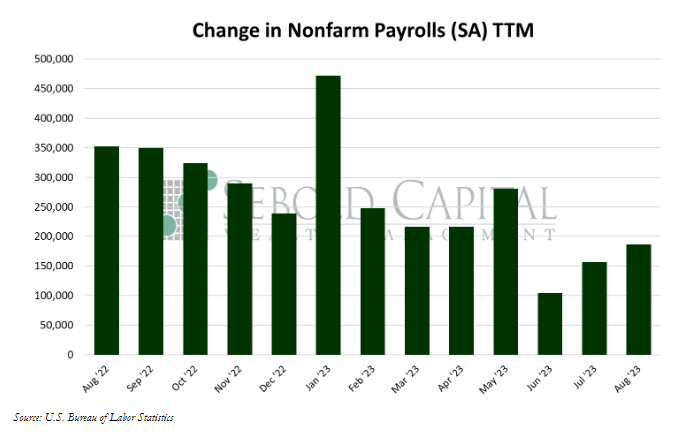 The Employment Situation is a report by the Bureau of Labor Statistics that gives us a look at the employment outlook of the US economy. The report does not include those employed in agriculture because of the seasonal nature of their work. This report obtains these numbers from 142,000 businesses and government agencies to track the new jobs added in non-farming sectors of the economy.
The Employment Situation is a report by the Bureau of Labor Statistics that gives us a look at the employment outlook of the US economy. The report does not include those employed in agriculture because of the seasonal nature of their work. This report obtains these numbers from 142,000 businesses and government agencies to track the new jobs added in non-farming sectors of the economy.
In August, U.S. employment rose by 187,000 on a seasonally adjusted basis, coming in slightly above expectations of a 180,000 increase. However, the prints for both June and July were both revised to the downside, as has been the case with every single print this year. Both revisions subtracted a combined 54,000 from the headline number. June’s print had already been revised from its original 209,000 estimate to a more modest 185,000, but that was subsequently slashed to a mere 105,000. July’s print was revised from 187,000 to 157,000; further revisions seem probable, based on this year’s trend.
On the Household Survey side, the number of full-time jobs declined again, sliding by 82,000. However, the number of part-time jobs saw an increase of 32,000. The unemployment rate also increased unexpectedly-the consensus called for it to remain unchanged at 3.5%, but it came in at 3.8%. Higher unemployment appeared to be driven primarily by an unexpected increase in the labor force; 736,000 people joined the workforce in August. The participation rate increased for the first time in five months, increasing from 62.6% to 62.8%.
Wages, another closely watched indicator, appeared to slow down last month. Average hourly wages increased by 0.24% from July, the slowest rate in over a year. Year-over-year wage growth has moderated too. Last year, it ran as hot as 5.9%; now it sits at 4.3%. Average weekly earnings rose by 0.53%, but mainly because the average workweek increased as well. This takes some pressure off the Fed before their next meeting. Growth seems to have slowed down, likely to a further extent than initial data might have suggested, which should be in line with what Fed officials are hoping to see. Monetary policy is known to operate with a long and variable lag, and it looks like its effects are beginning to show.

September 1, 2023
